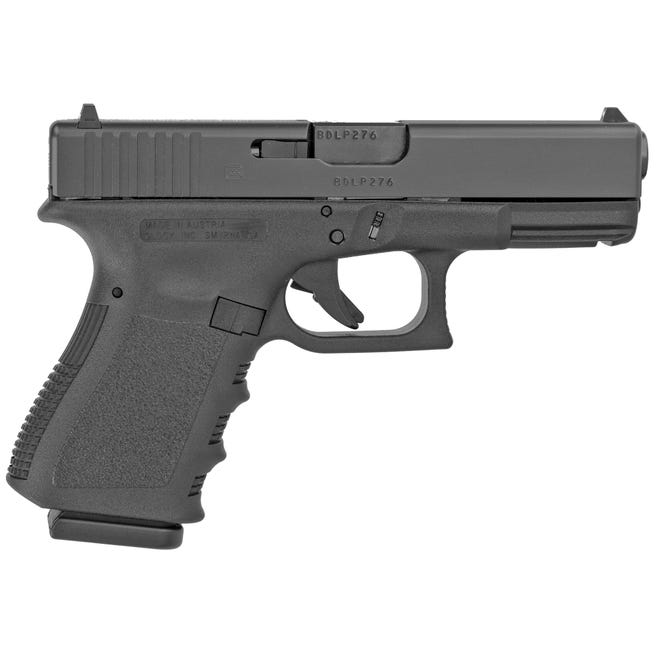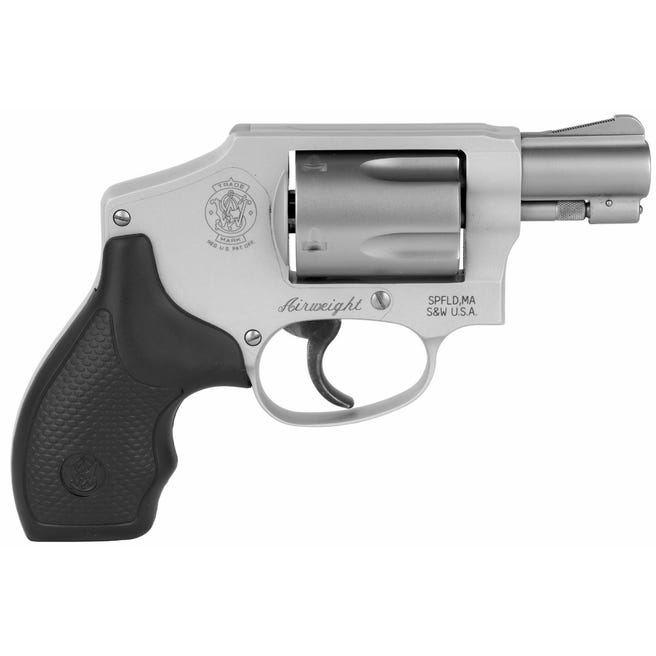Title I vs. Title II Firearms

Whether you are newly interested in firearms or have a deep passion for the industry, you’ll find that the amount of information about pistols and rifles for sale online is vast. There are terms, classifications, and much more that can make it difficult to know where to begin. If this is your first time looking at firearms for sale, you’ll likely hear terms such as Title I and Title II being thrown around. To understand what Title I and Title II firearms mean, the best place to start is at the beginning.
Disclaimer: We at GrabAGun are not lawyers and this article is merely trying to differentiate between Title I and Title II. If you are planning to purchase Class 3 firearms, make sure to read all the laws and consult a local lawyer if necessary.
Defining Title I and Title II
It starts all the way back in 1934 when the National Firearms Act (NFA) was first passed. This was a congressional act that gave the federal government the ability to impose an excise tax on the manufacture and transfer of certain firearms, as well as the ability to mandate the registration of firearms. In a nutshell, it’s because of this act that private citizens can’t purchase a fully automatic weapon and must obtain a federal tax stamp for any item classified as Title II. More detail about what a Title II firearm for sale looks like will be explained later on.
Later, the Gun Control Act of 1986 (GCA), commonly referred to as Title I, was passed. It imposed stricter licensing and regulation while establishing new categories of firearms and prohibiting the sale of firearms or ammo to felons. However, because of how restrictive it was, another act was promptly passed that same year, the Firearm Owners Protection Act (FOPA), ultimately revising many of the provisions under the GCA. For example, under FOPA, the interstate sale of long guns is allowed, even if it’s on a limited basis. Interstate sale means that ammunition can be sold across state lines (i.e. someone purchasing ammo for sale in Texas even though they live in Georgia). Ammunition can also be shipped through USPS under FOPA, and the requirement for record-keeping of non-armor piercing ammo sales is allowed. You can even order ammo online and have it shipped directly to your home.
Overall, federal regulations are still imposed and necessary for the sale of firearms. So what is the difference between a Title I and a Title II firearm?
What is a Title I Firearm?
The definition of a Title I firearm is pretty straightforward. According to the GCA and FOPA, this is any factory standard pistol, rifle, revolver, or shotgun. These can be purchased, owned, and built by any citizen who isn’t prohibited by the Bureau for Alcohol, Tobacco, and Firearms (ATF).
Pistols and Handguns

This can be anything from a 9mm handgun to a concealed carry pistol for sale. No tax stamp is required to purchase or own a Title I handgun, but, according to federal laws, you do have to be 21 years of age or older, when purchasing thru an FFL like GrabAGun, you must also pass an FBI background check.
Find a semi-automatic handgun for an affordable price today!
Rifles

The barrels of Title I rifles must be longer than 16-inches to maintain their Title I classification. This includes options like hunting rifles or other tactical rifles for sale. If you are considering getting a rifle, you’ll also want to pay attention to the stock to stay within the regulations.
Browse GrabAGun’s collection of rifles for sale
Revolvers

Revolvers are a great addition to any firearm collection. They are fun to shoot at the range and there are even a few models that are great for EDC. Most revolvers comply with Title I specifications with the exception for revolvers modified to shoot fixed shotgun shells. Those are considered part of the “any other” grouping, mentioned later on.
Take a look through all the revolvers GrabAGun has to offer
Shotguns

A Title I shotgun might include over-under shotguns, home defense shotguns, or hunting shotguns. Any barrel 18-inches or longer won’t require a tax stamp and will keep its Title I classification.
Pick up the shotgun you need from GrabAGun today
What is a Title II Weapon?
As defined by the NFA, Title II weapons, also known as Class 3 weapons as the following:
- Machine guns
- Silencers/suppressors/mufflers
- Short-barreled rifles
- Short-barreled shotguns
- Destructive devices
Additionally, there is a catch-all group of devices that aren’t exactly firearms and aren’t exactly explosives. The best way to establish a Title I from a Title II firearm is by determining the barrel length, which is measured from the end of the muzzle to the front of the breechface.
Any device considered a Class 3 weapon must have a $200 ATF stamp, for which you have two options to acquire one. If you are transferring a Class 3 firearm to an FFL, you’ll need to fill out a Form 4 application. If you are registering a new NFA item, then a Form 1 will be required. Between the applications and another federal background check, most Title II devices for sale have an 8-12 month waiting period.
Machine Guns
According to the NFA, a machine gun is defined as “any weapon which shoots, is designed to shoot, or can be readily restored to shoot, automatically more than one shot without manual reloading, by a single function of the trigger.” The definition was expanded to include any frame, receiver, and/or combination of parts intended to make a machine gun.
- Examples:
- M16 Rifle
- Registered drop-in-auto-sear (RIDAS) for an AR-15
Note: GrabAGun does not stock or sell any firearm that is completely automatic.
Short-Barreled Shotguns
Also known as an SBS, a short-barreled shotgun is defined as a shotgun having a barrel of less than 18-inches, or a weapon made from a shotgun with an overall length of less than 26-inches. The latter is often referred to as a “sawed-off” shotgun.
- Examples:
- Mossberg 590A1 Class III Parkerized 12 Ga 14-Inch
- Kel-Tec KSG 12 Ga 13.5-Inch Barrel
Take a look at GrabAGun’s SBS for sale
Short-Barreled Rifles
The NFA defines a short-barreled rifle (SBR) as a weapon designed to be fired from the shoulder and fire one bullet at a time through a rifled barrel. It is a rifle with a barrel of less than 16-inches or a weapon made from a rifle with an overall length of less than 26-inches.
Note: Weapons with folding or telescoping stocks are measured with the stock unfolded, as intended for use. Weapons with detachable stocks are measured with the stock detached.
- Examples:
- Springfield Armory Saint Edge SBR
- A semi auto Glock with a shoulder stock
Browse GrabAGun’s SBR for sale here
Destructive Devices – Explosive Ordnance
A destructive device is any explosive, incendiary, or poison gas, including bombs, grenades, rockets, missiles, mines, and similar devices. This definition has been broadened to include parts intended for making such a device.
NOTE: While explosive ordinances are classified as NFA firearms, no state allows for their ownership with or without a gun trust. GrabAGun does not stock or sell them in any capacity.
- Examples:
- Claymore mines
- Improvised explosive devices (IED)
Destructive Devices – Large Bore Firearms
As defined by the NFA, Large Bore Firearms are any projectile weapon with a bore diameter greater than half an inch (.50 Caliber). It includes most shotguns, especially ones classified as “combat shotguns,” as well as devices not intended or not likely to be used as a weapon. This includes flare launchers with non-weapon rounds or line throwing devices.
Antique firearms are exempt if they are “not likely to be used as a weapon.” They must have been manufactured before 1898 and may not use conventional ammunition, such as Flintlock pistols.
- Examples:
- The Anzio 20mm Rifle
- Flare launchers with anti-personnel rounds
Silencers/Suppressors
A suppressor is any device that can be used for silencing, muffling, or diminishing the report of a portable firearm. The definition was expanded to also include any combination of parts intended for use in assembling or manufacturing a firearm silencer.
- Examples:
- Just about any suppressor for sale at the moment
Check out the silencers and suppressors GrabAGun has to offer
Any Other Weapon – AOW
The NFA defines this catch-all category as “any weapon or device capable of being concealed on a person from which a shot can be discharged through the energy of an explosive.”
- Examples:
- A pistol with a forward grip
- A cane gun
Title II Resources
Listed below are links to ATF resources, including forms, further information, and more:
GrabAGun Has Your Title I & Title II Firearms For Sale
There are many more regulations that can alter the definition of a Title I or Title II firearm. That said, knowing the primary differences between the two can help you make the best purchase for your needs. Take your time researching all the various Title I and Title II firearms, such as 9mm handguns for sale, hunting rifles, silencers/suppressors, short-barreled shotguns for sale, and more. Having a solid understanding of what you want and need will help you make the right decision. GrabAGun proudly offers a wide range of firearms, rifles, and shotguns to choose from. Whether you are looking for the best handgun for women or a Class 3 shotgun, we are sure to have it.
—Kellie Krevosky
